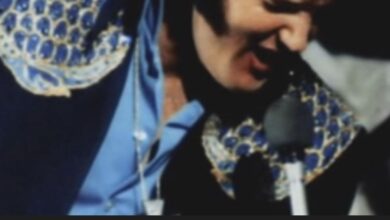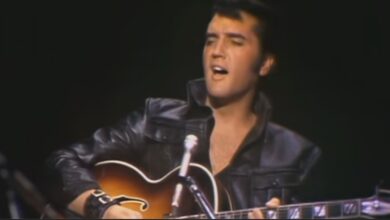This Dance Was Well Known In The 1950s, Can You Remember It Today
In February 1958, American high school gyms and sock hops were abuzz with the latest dance sensation: “The Stroll.” This line dance captured the youthful exuberance of the era and epitomized the rock ‘n’ roll culture that was sweeping the nation. Originating from African American communities, “The Stroll” gained mainstream popularity through television, particularly on Dick Clark’s “American Bandstand.” Teenagers across America eagerly embraced the dance, bringing its spirited energy to local social events.
“The Stroll” was more than a mere dance; it was a cultural symbol that mirrored the social dynamics of the 1950s. The dance involved two lines of participants facing each other, creating an aisle down the center. Couples took turns walking down the aisle in rhythm with the music, adding their own personal flair to their movements. This format allowed for both group interaction and individual expression, resonating with the youth of the time who were beginning to explore their own identities and social roles.
The accompanying song, also titled “The Stroll,” was performed by The Diamonds, a Canadian vocal group renowned for their smooth doo-wop harmonies. The Diamonds played a crucial role in popularizing the dance, with their catchy tune serving as the perfect soundtrack for the burgeoning craze. Lead singer Dave Somerville’s rich baritone voice became emblematic of the era, guiding dancers with his melodic delivery and contributing to the song’s widespread appeal.
The dance’s simplicity and inclusivity made it an instant hit across various demographics, transcending racial and social barriers during a period of significant segregation in the United States. Its easy-to-learn steps and engaging format ensured that “The Stroll” was accessible to everyone, while its cool, carefree vibe made it irresistible. Teenagers embraced the dance with enthusiasm, donning their finest outfits and confidently taking their turns down the aisle, embodying the optimism and cultural shift of post-war America.
As “The Stroll” gained momentum, it became a staple at dance parties and school dances, symbolizing a period of youthful rebellion and communal joy. The dance was not only a reflection of the era’s vibrant rock ‘n’ roll culture but also a unifying activity that brought people together in celebration. The widespread adoption of “The Stroll” demonstrated how a simple dance could encapsulate the spirit of a generation and leave an indelible mark on American pop culture.
“The Stroll” remains a nostalgic symbol of the 1950s, representing a time when music and dance were central to the social fabric of youth culture. Its legacy endures as a testament to the power of music and dance in shaping cultural trends and bringing people together in a shared experience of joy and expression.



